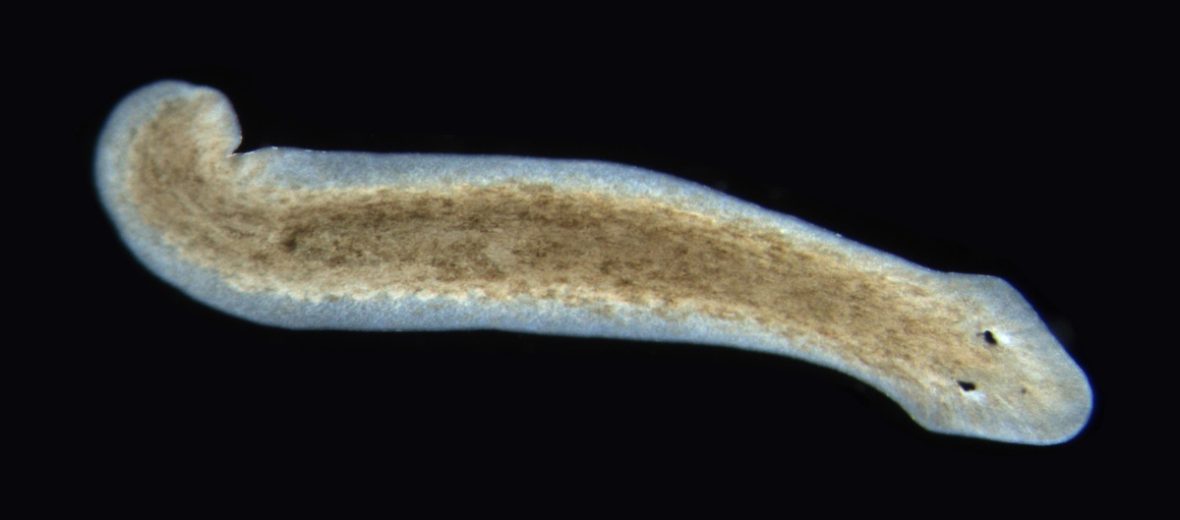
The planarian, aka flatworm, can be found in freshwater, marine, and terrestrial environments. They need either a moist, humid, or watery environment in order to survive. Take that away and they die. Not only do they live all over the world, but they’re also found in laboratories, as they’re used in extensive biomedical research, pharmacology, and neuroscience. These critters are not currently evaluated by the IUCN.
First the Stats…
Scientific name: Planaria
Length: Up to .59 inch
Lifespan: Up to 3 years (for sexually reproducing species) | Unknown for the others
Now on to the Facts!
1.) Planarians are carnivores (eat meat). They prey on a variety of other organisms, like water fleas and more, carrion (dead animals), and they also cannibalize each other.
2.) They catch their prey by encircling it and then extend a proboscis that acts as a pharynx. Then consume their kill, after constricting it to death.
3.) Their pharynx, located in the center of their body, also acts as an anus. Got a breath mint?
4.) There is 1 known species that also produces tetrodotoxin. They use this as a self defense mechanism.
5.) Most species have 2 eyes that appear crossed. Others have multiple eyes. Some have just 1 eye and others lack eyes altogether.
But wait, there’s more on the planarian!
6.) There are several known species with ears that don’t pick up sounds, but rather chemicals.
7.) If you cut off the head of a planarian, they can still detect light and dark, and respond accordingly.
Did you know…?
Tetrodotoxin is the most lethal form of toxin known. It can be up to 200 times more potent than morphine. And there is no antidote!
8.) When introduced to amphetamines, cannabinoids, cocaine, and nicotine, these critters exhibited the same withdrawal symptoms as is seen in humans and other mammals.
9.) Many planarians can be cut into multiple sections and will regrow into new planarians. You can even decapitate them and a new worm will grow from the severed head.
10.) Another interesting feature of these amazing creatures is that you can also sever multiple sections of their head and multiple heads will grow (up to 10 heads) on the same planarian! Like a hydra.
But wait, there’s still more on the planarian!
11.) An experiment conducted on these little critters exposed them to light and simultaneous electric shock. When the shock feature was removed, they were exposed to just the light and they responded to the light as if they were being shocked. When cut in 2, the newly reformed planarians reacted the same way to the experiment.
12.) If you remove the brain of 1 planarian and implant it into the body of another, that brain will then control the new planarian. This even works when transplanting the brain of 1 planarian species into a different species.
13.) Of all the species of planarians, none are known to be parasitic.
Now a Short Planarian Video!
Be sure to share & comment below! Also, check out the Critter Science YouTube channel. Videos added regularly!
Want to suggest a critter for me to write about? Let me know here.
Think you know a lot about critters? Try your hand at these fun, free quizzes:



